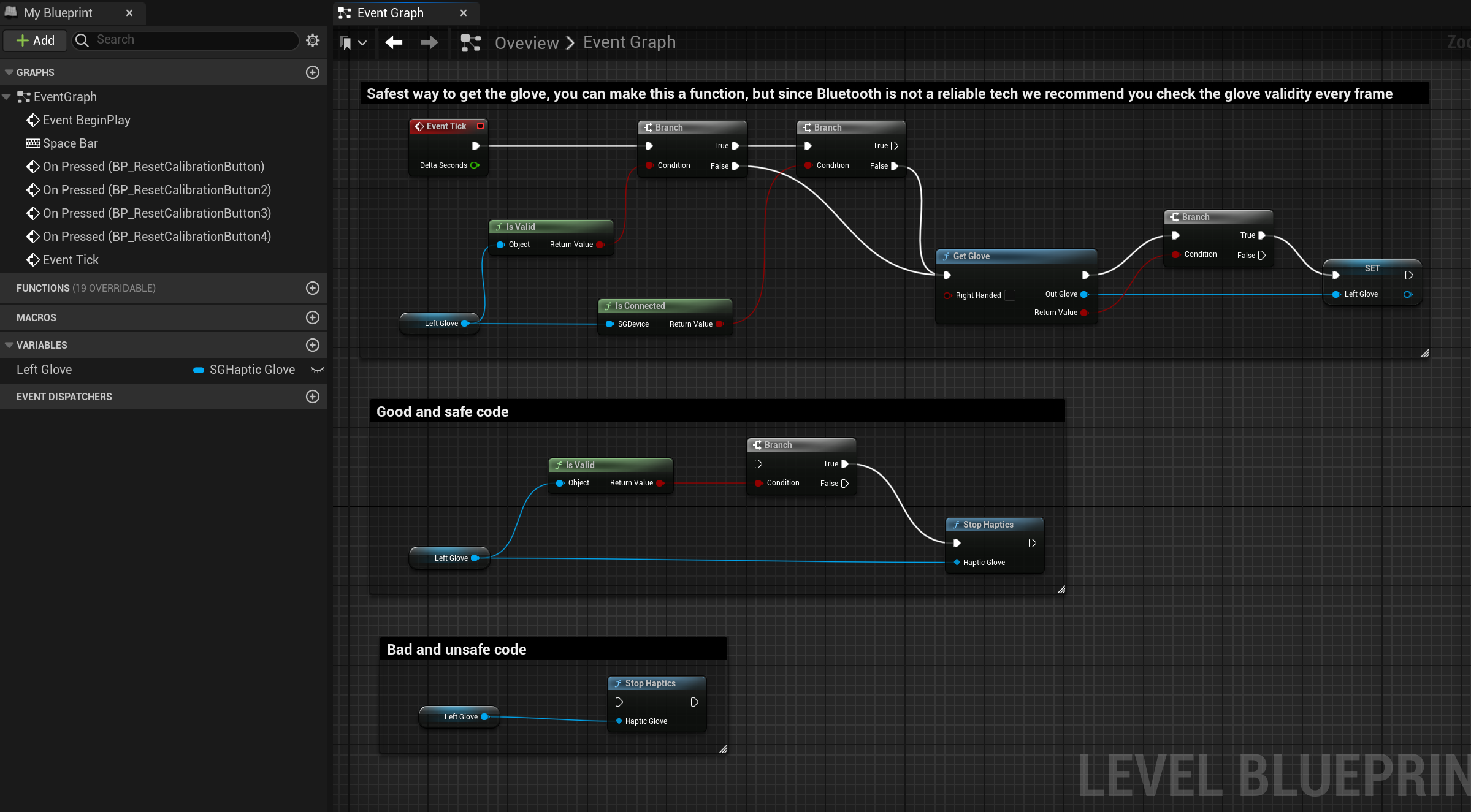Safe and Reliable Glove Access in Blueprint
Since the Blueprint API uses the underlying C++ API to access the SenseGlove hardware, it often has to deal with C++ pointers. Those who are familiar with C++ and in particular with the Unreal Engine UObject Garbage Collection System are aware that:
- As a general rule of thumb, a pointer should be validated before dereferenced, meaning before accessing the pointer a
NULLcheck should be performed, otherwise if the pointer isNULLthe program is going to crash upon access. - Unreal implements a garbage collection scheme whereby UObjects that are no longer referenced or have been explicitly flagged for destruction will be cleaned up at regular intervals. The engine builds a reference graph to determine which UObjects are still in use and which ones are orphaned. The ones that are orphaned will be evaluated to
NULLon the next GC cycle and their allocated memory will be released. Hence,NULLchecks on UObjects are always mandatory.
Glove objects inside the SenseGlove Unreal Engine Plugin, utilize the UObject system, and since communication for Nova gloves happens over SenseCom and the Bluetooth protocol, and also the gloves are running on battery, there's always the possibility for a glove variable to become NULL and therefore invalidated when the glove hardware for any reason is not accessible.
The recommended way to work with a glove instance without any performance penalty, and in a safe manner in Blueprint is:
- Cache the glove instance inside a global variable if it passes certain tests so that you don't have to perform all those checks on every access. This usually could happen inside the
Tickfunction. - The first check inside the
Tickfunction is to check whether the cached glove instance is valid. If it's valid we continue to the next step, if not, we ask the API for a new glove instance. - If the glove instance is valid, then it's best to perform a connectivity check next. If the glove is connected we don't have to do anything else in regards to obtaining a new glove instance and caching it. If however the glove is not connected, we might ask the API for a new glove instance.
- If any of the above steps fail, then we can actually ask the API for a new glove instance, and if the result is successful we're going to cache the new glove instance.
- From here on, anywhere else inside your code, whenever you need to access the glove data or perform an operation like for example sending or stopping haptics you always perform a validity check and only proceed when the glove instance is valid. This way you will always ensure you are accessing the glove instances in a safe and reliable manner, thus avoiding any unexpected behaviors or crashes.
The following Blueprint examples implement the above approach and also demonstrate good and bad glove instance accesses:
